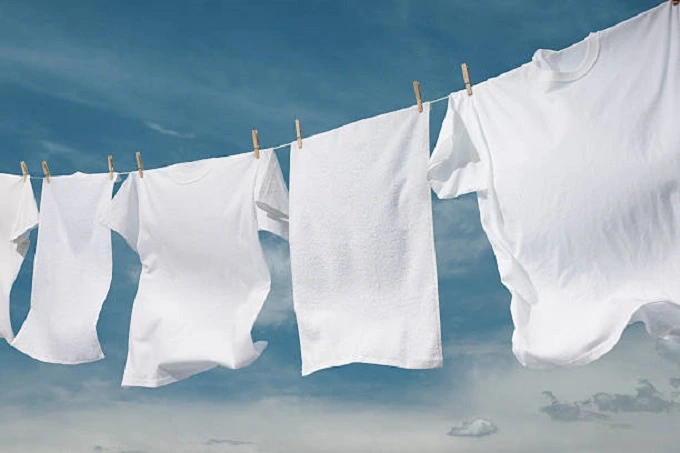White clothes are basic for any wardrobe. They require special attention as they are easily soiled and may become dull or yellow. To avoid these troubles, they need to be washed properly. In this article, we have collected 8 tips that will help keep white clothes in their original form.
1. Wash at a maximum water temperature
Clothes labels usually write what maximum water temperature can be used when washing. It is you who needs to be put on your washing machine. You should also pay attention to the water temperature when washing delicate fabrics to avoid spoiling things.
Here are the main recommendations for water temperature for different fabrics:
- hot water: for washing dirty clothes, bath and kitchen towels, bedding, and disinfecting washcloths;
- warm water: for synthetic fabrics, natural and artificial materials, as well as moderately soiled clothes;
- cold water: for delicate fabrics, clothes with blood stains, wine or coffee, and lightly soiled items.
2. Do not load the washing machine completely
When we load a lot of things into the drum, there is little room for the water to circulate. This may cause stains on white clothes to be incompletely removed and the fabric to turn yellow. Try to load the washing machine halfway or less; then, you will keep the color of the clothes and get rid of dirt.
3. Turn clothes inside out
Rubbing against the drum during washing often leads to the fact that the clothes deteriorate and fade. Therefore, before washing, turn it inside out. This will preserve the color and structure of the fabric, and white things will last longer.
By the way, the recommendation also applies to white clothes with bright patterns and prints. This will prevent them from fading and fading.
4. Use bleach
Bleaching products can restore the color of yellowed white clothes. However, they must be used with care. Pay attention to the product label. If you see an empty triangle on it, you can safely use any bleach.
If the triangle is completely black, then fabrics can be bleached, but only with products that do not contain chlorine. It can lead to oxidation and tissue damage. It is worth paying attention to more gentle bleaching agents, for example, oxygen.
But the triangle with the letters CL indicates that you can bleach clothes with chlorine-containing products.
You should not use bleach if a triangle is drawn with a diagonal line that crosses it out. It will ruin the cloth, even if you use the mildest means.
5. Sort clothes before washing
Sort the whites as they get dirty. Don’t wash a T-shirt with dirt stuck to it and an almost clean white dress together and hope it works. Due to the accumulation of dirt in the drum, white clothes may turn yellow or gray.
It is also worth separating cotton or coarse fabrics from synthetic and delicate ones to avoid fraying or shrinkage.
6. Soak and treat stains before washing
If your white clothes have noticeable stains, you should pre-treat them before sending them to the wash. Otherwise, you may encounter the fact that, although they lighten up, they remain in the form of yellow streaks.
For example, apply a little liquid detergent or special compounds to remove dirt on them. It will be necessary to wait a certain time for the funds to have time to act. Usually, it varies from several minutes to several hours, depending on what is indicated on the label.
Soaking clothes for a while before loading them into the washing machine is also effective. This will allow the stains to be washed off better and the color of the clothes to remain uniform. For soaking, you can use laundry soap and washing powder.
7. Dry it in the sunlight
Drying white clothes in the sun plays a big role in keeping them bright. UV rays help to refresh and whiten clothes. Also, be careful not to overdry things. This can cause the fabric to show a yellow tint.
8. Don’t use too much detergent
Use a cap or a measuring cup to measure the optimal amount of the product, which the manufacturer indicates on the package.
If you overdo it, a film may form on the clothes that will attract dirt. This causes white things to take on a gray and yellow tint. But even too little powder leads to trouble: clothes do not wash off.
